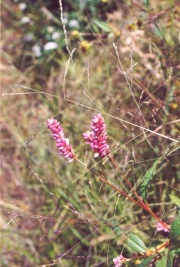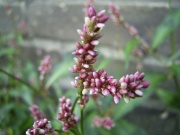Difference between revisions of "Dyer's knotgrass"
m (Text replace - "== Authority ==" to "== Sources Checked for Data in Record ==") |
|||
| Line 23: | Line 23: | ||
* Helmut Schweppe, Schweppe color collection index and information book | * Helmut Schweppe, Schweppe color collection index and information book | ||
| − | * Wikipedia | + | * Wikipedia: http://en.wikipedia.org/wiki/Knotgrass (accessed Oct. 2004) |
[[Category:Materials database]] | [[Category:Materials database]] | ||
Revision as of 16:38, 21 June 2020
Description
A natural dark blue dye obtained from the Polygonum tinctoria plant native to China, Japan and Manchuria. The colorant in dyer's knotwood is Indigotin. Traditionally in Japan, cloth was dyed in a hot water solution containing knotgrass and millet jelly (Mizuame) after which it was dipped in cold water to precipitate the indigotin (Shimoyama et al 1996).
Synonyms and Related Terms
knotgrass blue; knotweed; ai (Jap.); Polygonum tinctoria; pileurt (Dan.); Knöteriche (Deut.); renouée (Fr.); duizendknoop (Ned.); rdest (Pol.);
Additional Information
° H.Schweppe, "Indigo and Woad", Artists Pigments, Volume 3, E. West FitzHugh (ed.), Oxford University Press: Oxford, 1997.
° S.Shimoyama, Y.Noda, S.Katshuhara, "Non-Destructive Analysis of Ukiyo-E Prints" Dyes in History and Archaeology, No.15, Paper presented in Manchester England, Nov. 1996.
Sources Checked for Data in Record
- Helmut Schweppe, Schweppe color collection index and information book
- Wikipedia: http://en.wikipedia.org/wiki/Knotgrass (accessed Oct. 2004)

